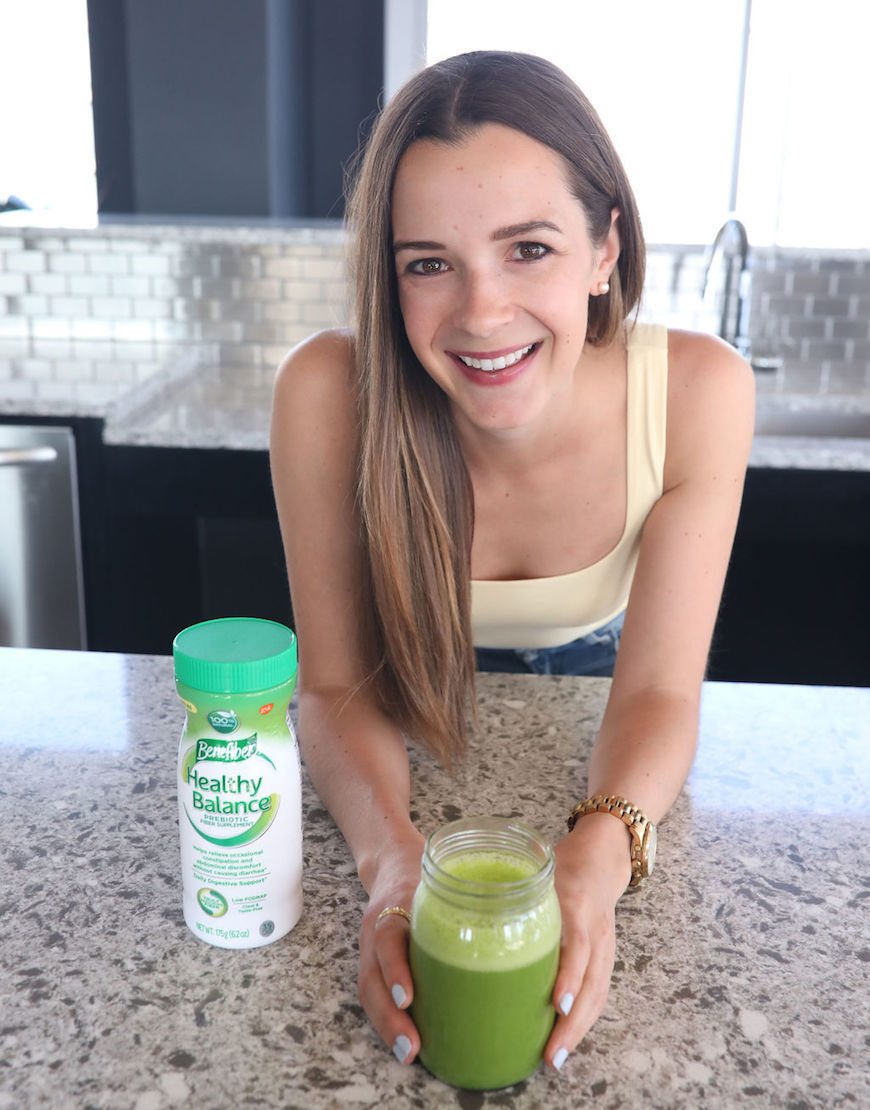On the Low FODMAP Diet? Here’s What You Need to Know About Getting Enough Fiber
This journey has involved copious amounts of research, and a lot of trial and error with pretty much every digestive health solution in hopes of solving the mystery of my incessant bloat and constipation.
Among the methods I've tried is the low FODMAP diet—an eating plan developed by Monash University that requires removing certain food groups (Fermentable Oligosaccharides, Disaccharides, Monosaccharides, and Polyols, to be exact) from your diet for two to six weeks to identify potential triggers of GI symptoms.
I followed it for the full six weeks, and it helped! I felt almost complete relief from my digestive woes, and once I went through the re-introduction portion (when you systematically add high-FODMAP foods back into your diet to see which ones produce symptoms), I was able to determine which foods my body most disagreed with.
What I didn't know at the time was that I was missing a piece of the gut-health puzzle that could have further enhanced my symptom relief: tracking my fiber intake, which turns out is a whole lot more important than I thought.
What I didn't know at the time was that I was missing a piece of the gut-health puzzle that could have further enhanced my symptom relief: fiber.
I asked Maggie Michalczyk, RD to explain the importance of fiber while on a low-FODMAP diet, and she put it like this: "At times people who are following a low-FODMAP diet can struggle to get enough fiber because they are limiting certain foods that [are the primary sources] of fiber in our diets like apples, pears, broccoli and cauliflower. They also can be fearful of certain foods that might cause [discomfort], and avoid them completely, missing out on the fiber that they might contain as well."
That food fear was super real for me, so while I was doing low-FODMAP, I was pretty much living off my "safe" foods of grilled chicken, bananas, and sunflower butter—AKA not the most fibrous combo.
Michalczyk flagged that as a problem because fiber is crucial to not only keeping the digestive system running smoothly (which is the aim of trying the low FODMAP diet in the first place), but also supporting your whole microbiome.

"For those with digestive issues, fiber is important because of its role in our overall digestive health," she explains. "We are learning so much about gut health and how it’s related to so many other systems and functions in our body and may play a role in our mood, [...] digestive and immune health."
So how can you get enough fiber to support your digestive health and overall health when you're cutting out so many high-fiber foods? Michalczyk has a few suggestions: "From a food standpoint, I recommend quinoa, kale, spinach, butternut squash, kiwifruit, raspberries, and the recommended amount of oats [half a cup] if those sit well," she says.
If you're not able to hit your daily total through food alone (remember, you should be aiming for 21 to 38 grams a day), Michalczyk recommends supplementing. "I would definitely recommend a fiber supplement like Benefiber Healthy Balance because it is specially formulated for those following a low FODMAP diet, and helps to relieve occasional constipation without causing diarrhea," she says. "The prebiotic fiber in Benefiber Healthy Balance helps promote the growth of good bacteria in the gut, and helps to maintain digestive health."
Basically, if digestive health is the end goal of your low FODMAP journey, you're going to have a much tougher time getting there without fiber (file that under "things I wish I had known before now"). So if you're thinking about taking the diet for a whirl, learn from my own trial-and-error experience—focus on fiber, and your FODMAP-free experience could be even better.
In partnership with Benefiber
Top photo: Getty/Westend61
Loading More Posts...